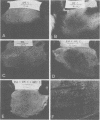Abstract
Because of the association of the group A streptococcal pyrogenic exotoxins (SPEs) with erythrogenic toxin used in the classical Dick test, the involvement of the SPEs in production of erythematous skin reactions was assessed. Unless they had been presensitized, young adult rabbits failed to show skin reactions after intracutaneous challenged with SPEs. Rabbits presensitized to purified protein derivative exhibited enhanced skin reactivity when given purified protein derivative plus SPE C; the enhancement was neutralized by antiserum to SPE C. Rabbits sensitized to bovine serum albumin showed extensive red rash development resembling scarlet fever rashes when given bovine serum albumin containing SPE C. Desquamation occurred 5 to 10 days after injection. Animals sensitized to one SPE type showed enhanced skin reactivity to challenge with homologous or heterologous SPE types, indicating the presence of a cross-reactive determinant within the SPE molecules. Repeated challenge of SPE-sensitized animals with homologous toxin resulted in concomitant antitoxin production with reduction of the enhanced skin reactivities, until typical delayed-hypersensitivity skin reactions remained. The data indicate that, in addition to the toxic reaction previously described, SPEs enhance Arthus and delayed-hypersensitivity skin reactions. It follows that erythrogenic toxin represents the enhancement of acquired skin reactivity to streptococcal antigens by one or more SPE types. Therefore, the Dick test measures SPE-enhanced hypersensitivity to streptococcal products.
Full text
PDF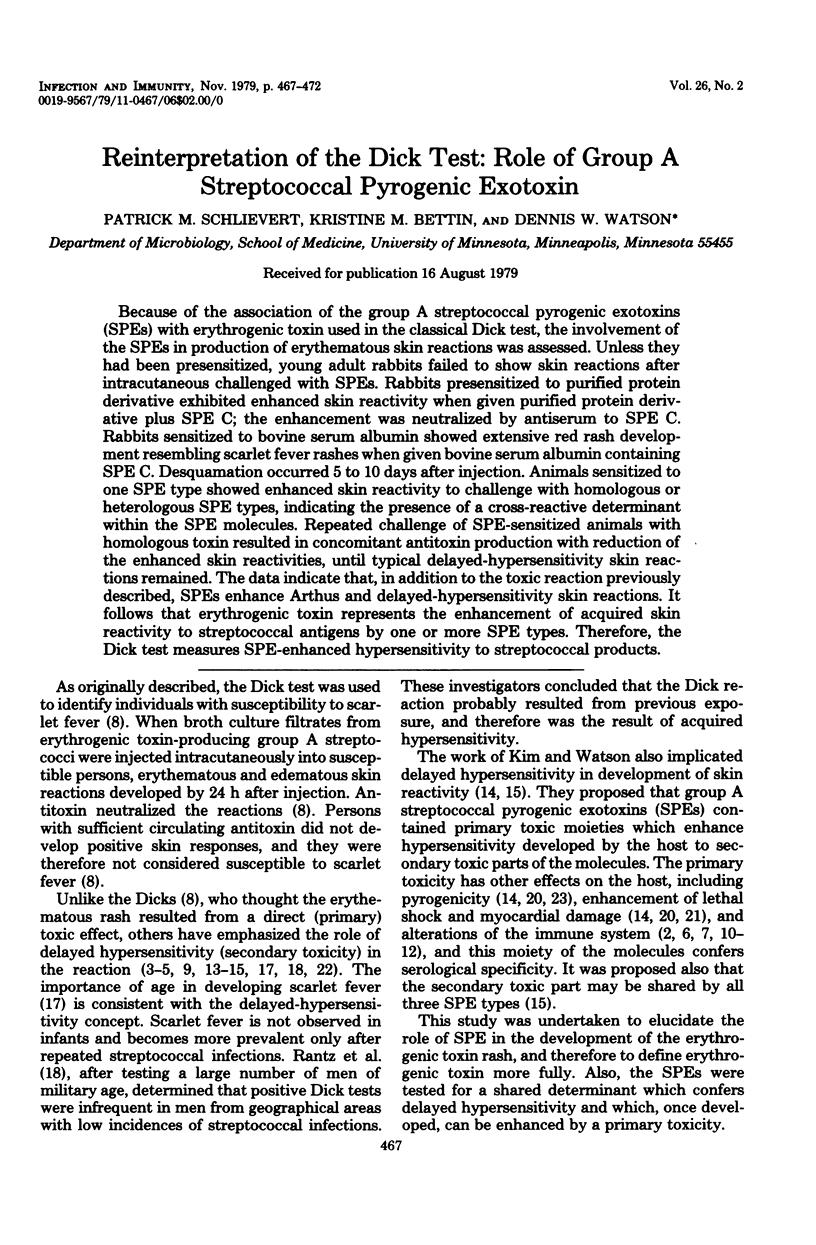
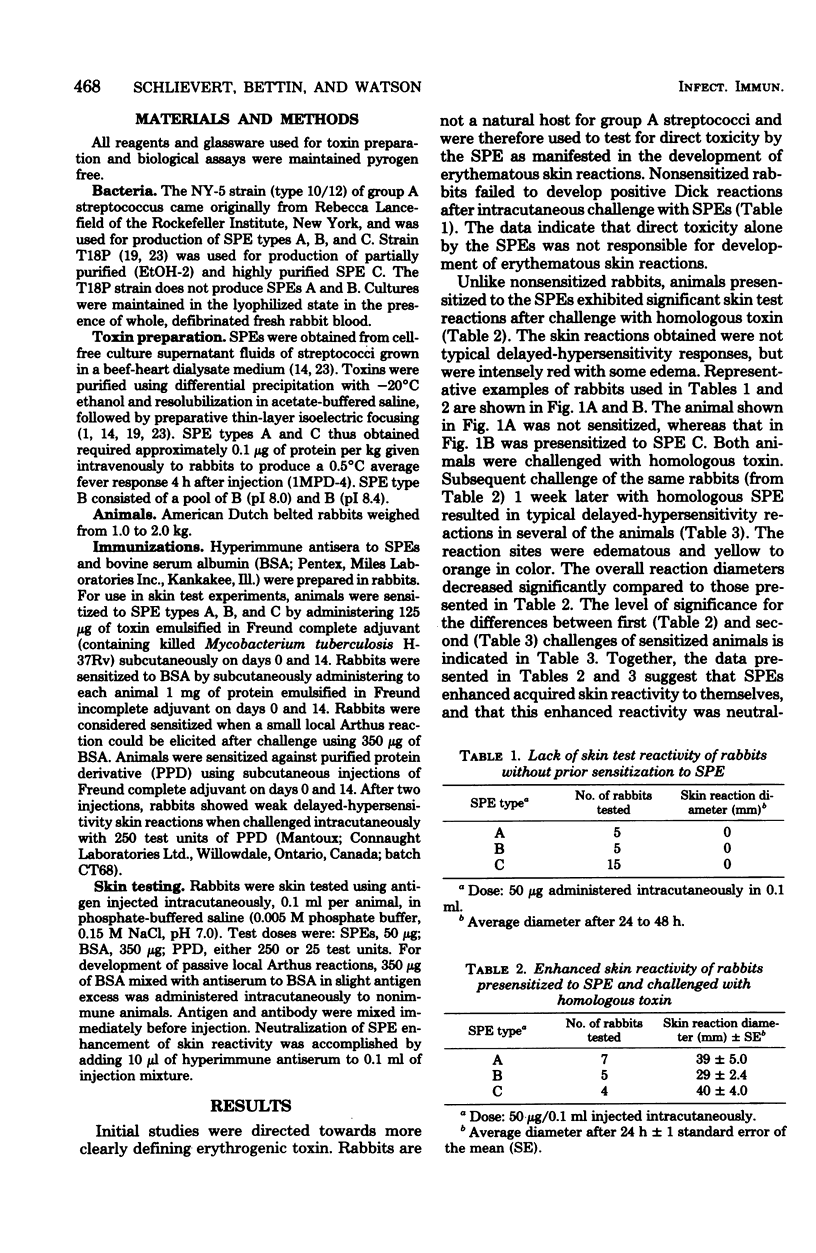
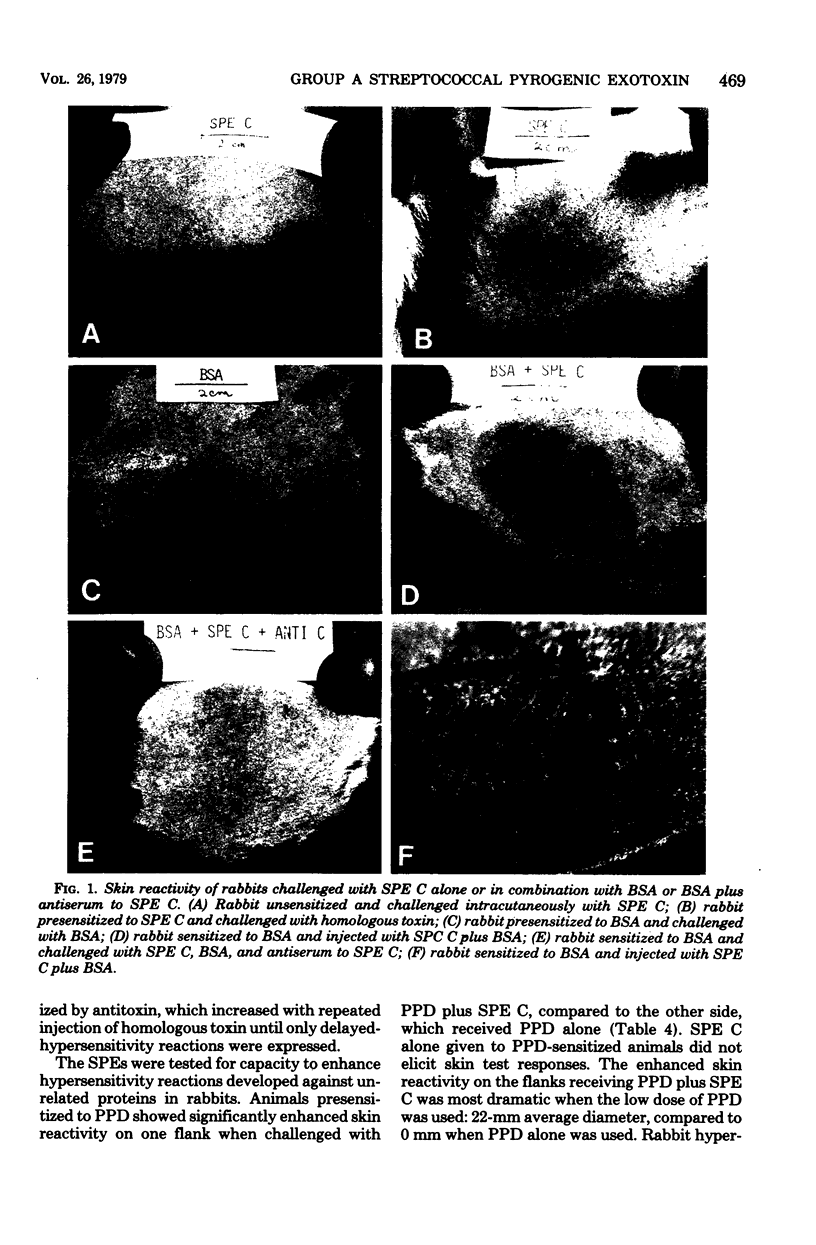


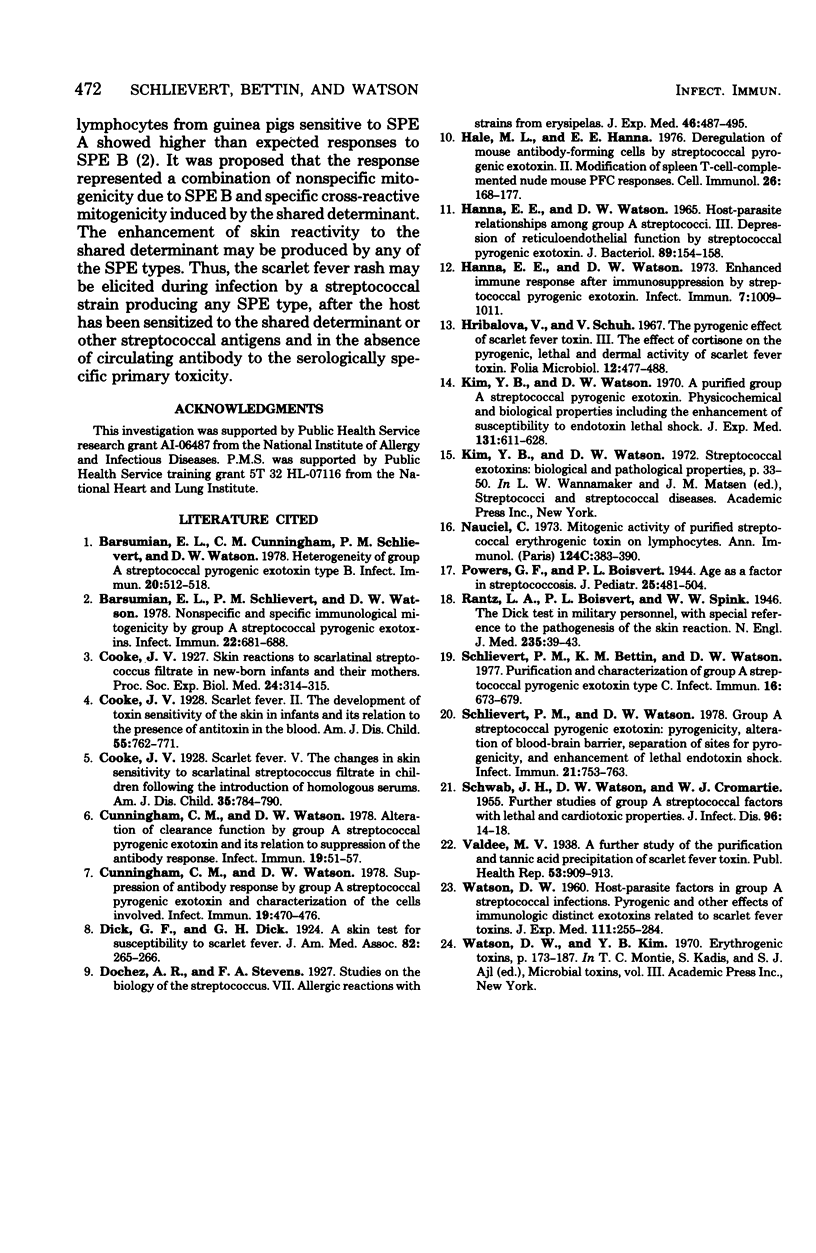
Images in this article
Selected References
These references are in PubMed. This may not be the complete list of references from this article.
- Barsumian E. L., Cunningham C. M., Schlievert P. M., Watson D. W. Heterogeneity of group A streptococcal pyrogenic exotoxin type B. Infect Immun. 1978 May;20(2):512–518. doi: 10.1128/iai.20.2.512-518.1978. [DOI] [PMC free article] [PubMed] [Google Scholar]
- Barsumian E. L., Schlievert P. M., Watson D. W. Nonspecific and specific immunological mitogenicity by group A streptococcal pyrogenic exotoxins. Infect Immun. 1978 Dec;22(3):681–688. doi: 10.1128/iai.22.3.681-688.1978. [DOI] [PMC free article] [PubMed] [Google Scholar]
- Cunningham C. M., Watson D. W. Alteration of clearance function by group A streptococcal pyrogenic exotoxin and its relation to suppression of the antibody response. Infect Immun. 1978 Jan;19(1):51–57. doi: 10.1128/iai.19.1.51-57.1978. [DOI] [PMC free article] [PubMed] [Google Scholar]
- Cunningham C. M., Watson D. W. Suppression of antibody response by group A streptococcal pyrogenic exotoxin and characterization of the cells involved. Infect Immun. 1978 Feb;19(2):470–476. doi: 10.1128/iai.19.2.470-476.1978. [DOI] [PMC free article] [PubMed] [Google Scholar]
- HANNA E. E., WATSON D. W. HOST-PARASITE RELATIONSHIPS AMONG GROUP A STREPTOCOCCI. 3. DEPRESSION OF RETICULOENDOTHELIAL FUNCTION BY STREPTOCOCCAL PYROGENIC EXOTOXINS. J Bacteriol. 1965 Jan;89:154–158. doi: 10.1128/jb.89.1.154-158.1965. [DOI] [PMC free article] [PubMed] [Google Scholar]
- Hale M. L., Hanna E. E. Deregulation of mouse antibody-forming cells by streptococcal pyrogenic exotoxin. II. Modification of spleen T-cell-complemented nude mouse PFC responses. Cell Immunol. 1976 Oct;26(2):168–177. doi: 10.1016/0008-8749(76)90361-0. [DOI] [PubMed] [Google Scholar]
- Hanna E. E., Watson D. W. Enhanced immune response after immunosuppression by Streptococcal pyrogenic exotoxin. Infect Immun. 1973 Jun;7(6):1009–1011. doi: 10.1128/iai.7.6.1009-1011.1973. [DOI] [PMC free article] [PubMed] [Google Scholar]
- Hríbalová V., Schuh V. The pyrogenic effect of scarlet fever toxin. 3. The effect of cortisone on the pyrogenic, lethal and dermal activity of scarlet fever toxin. Folia Microbiol (Praha) 1967;12(5):477–488. doi: 10.1007/BF02864955. [DOI] [PubMed] [Google Scholar]
- Kim Y. B., Watson D. W. A purified group A streptococcal pyrogenic exotoxin. Physiochemical and biological properties including the enhancement of susceptibility to endotoxin lethal shock. J Exp Med. 1970 Mar 1;131(3):611–622. doi: 10.1084/jem.131.3.611. [DOI] [PMC free article] [PubMed] [Google Scholar]
- Nauciel C. Mitogenic activity of purified streptococcal erythrogenic toxin on lymphocytes. Ann Immunol (Paris) 1973 Aug;124(3):383–390. [PubMed] [Google Scholar]
- SCHWAB J. H., WATSON D. W., CROMARTIE W. J. Further studies of group A streptococcal factors with lethal and cardiotoxic properties. J Infect Dis. 1955 Jan-Feb;96(1):14–18. doi: 10.1093/infdis/96.1.14. [DOI] [PubMed] [Google Scholar]
- Schlievert P. M., Bettin K. M., Watson D. W. Purification and characterization of group A streptococcal pyrogenic exotoxin type C. Infect Immun. 1977 May;16(2):673–679. doi: 10.1128/iai.16.2.673-679.1977. [DOI] [PMC free article] [PubMed] [Google Scholar]
- Schlievert P. M., Watson D. W. Group A streptococcal pyrogenic exotoxin: pyrogenicity, alteration of blood-brain barrier, and separation of sites for pyrogenicity and enhancement of lethal endotoxin shock. Infect Immun. 1978 Sep;21(3):753–763. doi: 10.1128/iai.21.3.753-763.1978. [DOI] [PMC free article] [PubMed] [Google Scholar]
- WATSON D. W. Host-parasite factors in group A streptococcal infections. Pyrogenic and other effects of immunologic distinct exotoxins related to scarlet fever toxins. J Exp Med. 1960 Feb 1;111:255–284. doi: 10.1084/jem.111.2.255. [DOI] [PMC free article] [PubMed] [Google Scholar]



